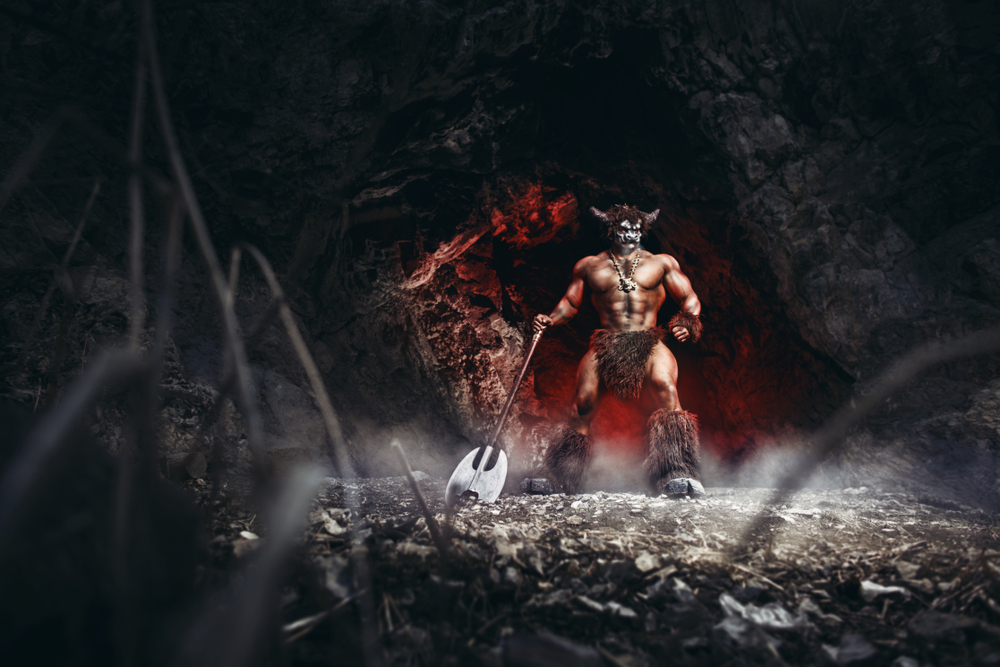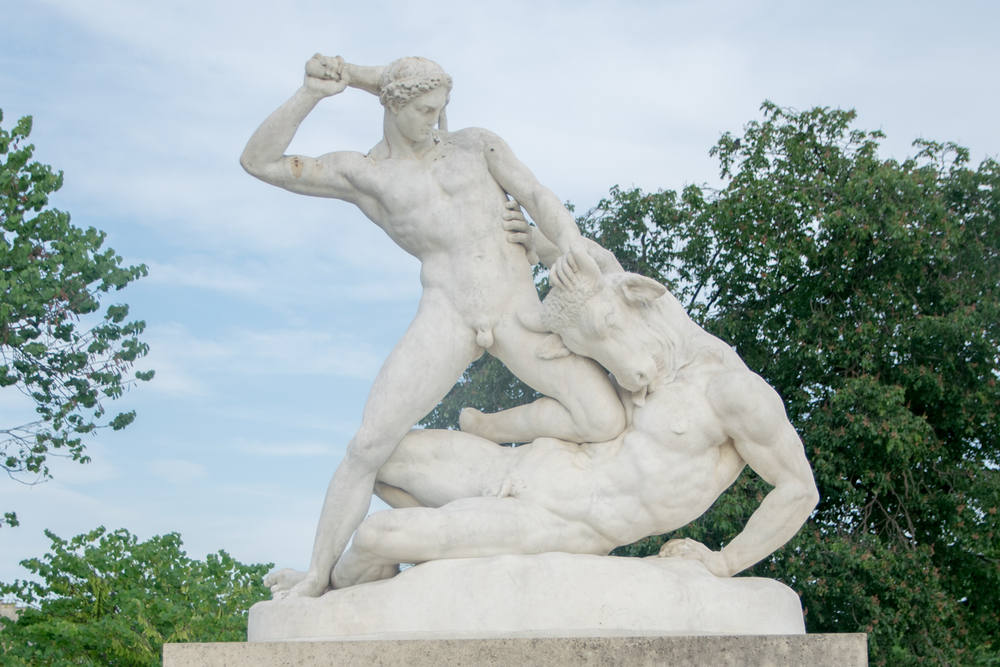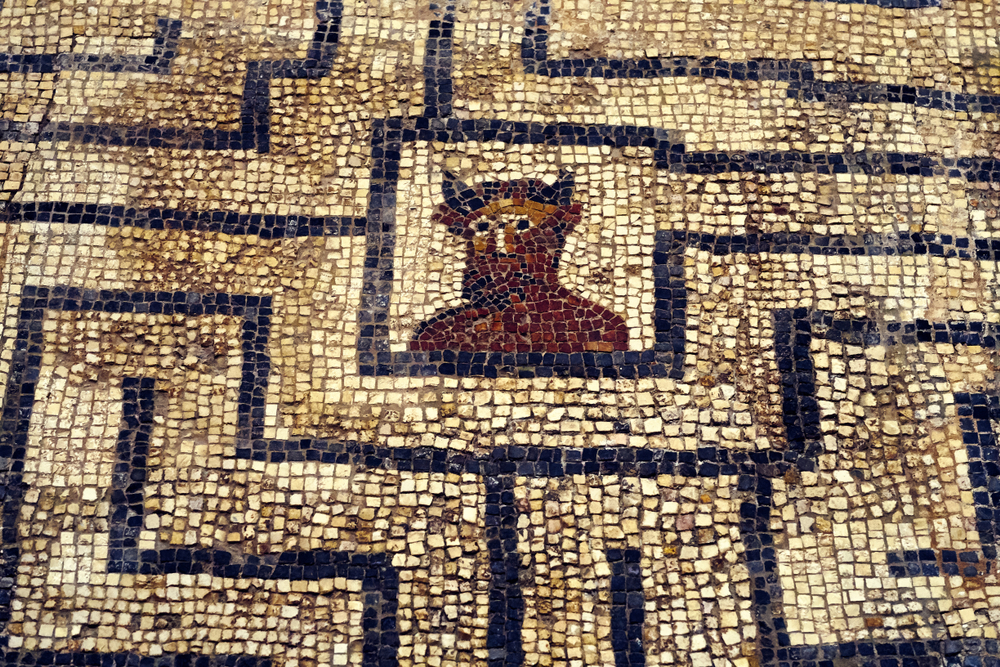Greek mythology documents a world where heroes clash with monsters, gods meddle in human affairs, and the lines between the natural and supernatural blur. Among these tales, the story of the Minotaur stands out for its drama, mystery, and the timeless theme of courage against seemingly insurmountable odds. Let's explore this fascinating story together, uncovering the myths, legends, and powers of the Minotaur.
Jump to:
Who or What is a Minotaur?

The Minotaur, a creature with the head of a bull and the body of a man, is one of the most intriguing and distinctive figures in Greek mythology. This half-man, half-bull entity represents the fusion of man and beast and the complex nature of human fears and challenges.
What does Minotaur mean?
The Minotaur’s name derives from "Minos" and "Taurus," reflecting its connection to King Minos of Crete and the bull and symbolising its bull-headed nature.
The Story of the Minotaur

The myth of the monstrous Minotaur weaves themes of divine intervention, ingenious craftsmanship, and heroic exploits:
The Birth of the Minotaur
The story begins with Pasiphaë, the queen of Crete, giving birth to the Minotaur, a being that embodies the duality of man and beast. This event was the result of a divine curse from Poseidon. King Minos, Pasiphaë's husband, had failed to sacrifice a bull sent by Poseidon, intending to keep it for himself due to its beauty.
Angered by this act of hubris, Poseidon cursed Pasiphaë to lust after the bull, leading to the birth of the Minotaur. This tale highlights the consequences of defying the divine will and the price of broken vows, portraying the Minotaur's existence as a symbol of divine retribution and the complex relationship between gods and mortals.
Daedalus's Labyrinth
To conceal this shameful secret, King Minos commissioned Daedalus, a master craftsman and inventor, to construct the Labyrinth. This structure was no ordinary prison but a masterpiece of architectural genius, with winding paths and dead ends that mirrored the complexity of the human mind and soul.
The Labyrinth's design reflects the inner turmoil and guilt associated with the Minotaur's existence, serving as a metaphor for the intricate and often perplexing journey of self-discovery and the struggles that arise from confronting your inner demons.
Theseus's Victory
Theseus, a hero of Athens, is celebrated for his defeat of the Minotaur. With the help of Ariadne, King Minos's daughter, who fell in love with him, Theseus receives a sword and a ball of thread, enabling him to navigate the Labyrinth.
Theseus's journey through the maze and his subsequent victory over the Minotaur symbolises the triumph of courage, intellect, and determination over adversity. This narrative highlights the virtues of heroism and the importance of cunning and resilience in overcoming challenges that seem impossible.
Minos's Rage
The aftermath of Theseus's victory reveals the darker side of King Minos, who, consumed by rage and grief, imprisons Daedalus and his son Icarus within the very Labyrinth Daedalus had created. This twist in the story underscores the unpredictable nature of power and the dangers of wrath, illustrating how those who wield power can be quick to punish the bearers of unintended consequences, regardless of their loyalty or intentions.
The Role of Ariadne
Ariadne's role is tragic, as her love-driven decision to help Theseus leads to a betrayal that ultimately costs her everything. After helping Theseus defeat the Minotaur, he abandons her on the island of Naxos. Ariadne's story is a meditation on the themes of love, sacrifice, and betrayal, showcasing the complexities of human relationships and the often painful costs of decisions made in the throes of emotion.
The Minotaur's Solitude
The myth touches upon the Minotaur's existence within the confines of the Labyrinth, a solitary life marked by isolation from both human and animal kin. This aspect of the story invites reflection on themes of loneliness, identity, and the nature of monstrosity. It challenges the audience to empathise with the Minotaur, a creature often seen solely as a monster, and consider the effects of isolation and misunderstanding on sentient beings, regardless of their origins or appearance.
Symbolism and Meaning of the Minotaur

Beyond its mythological role, the Minotaur carries deep symbolic meanings. It embodies man's dual nature, the conflict between the civilised and the primal, and the personal labyrinths we navigate.
The Minotaur in Art and Culture
The Minotaur has transcended its mythological roots to become a symbol in art and culture, from Picasso's Minotaur to modern interpretations in films and literature. Its enduring appeal lies in its representation of the human condition, the struggle between good and evil, and the quest for understanding and overcoming one's inner demons.
The Minotaur's Legacy
What is the moral of the Minotaur story? It teaches us about bravery, responsibility, and the importance of confronting our fears. The Minotaur's tale reminds us that within every challenge lies an opportunity for growth, transformation, and the realisation of our potential.
Frequently Asked Questions About the Minotaur in Mythology
Did the Minotaur Have a Name?
The Minotaur is sometimes called Asterion, which means "starry one." This name links him to the royal lineage of Crete and adds a layer of tragedy to his monstrous form, suggesting a nobility obscured by his bestial nature.
Who Gave Birth to the Minotaur?
The Minotaur was born to Queen Pasiphaë of Crete. The union that brought the Minotaur into the world was a punishment from Poseidon, who cursed Pasiphaë to fall in love with a divine bull because King Minos did not sacrifice the bull to him as promised.
What Powers Does the Minotaur Have?
While specific powers are not often detailed in myths, the Minotaur's strength and ferocity are legendary. As a creature half-man, half-bull, his physical prowess and endurance far surpassed those of any human or animal, making him a formidable opponent in the Labyrinth.
What is the Difference Between a Centaur and a Minotaur?
A Centaur is a creature from Greek mythology with the upper body of a human and the lower body of a horse, symbolising the union of civilisation and savagery. The Minotaur, on the other hand, has the head of a bull and the body of a man, representing the duality of human nature and the primal instincts within.
What Weapon Does a Minotaur Use?
Traditionally, the Minotaur is not depicted with weapons but relies on its brute strength, sharp horns, and immense physical power to battle opponents. However, interpretations vary, and some stories or artworks might equip him with weapons.
Is the Minotaur Considered Evil?
The Minotaur's moral alignment is complex. While he is often seen as a monstrous figure due to his appearance and the sacrifices made to him, some interpretations suggest he is more a victim of circumstance and the gods' whims than inherently evil.
What Happened After the Minotaur Died?
After Theseus killed the Minotaur, he was able to escape the Labyrinth with the help of Ariadne's thread. The death of the Minotaur ended the sacrificial offerings of Athens to Crete, marking the beginning of Theseus's rise as a hero and the eventual unification of Athens under his rule.
Can a Minotaur Be Female?
In classic Greek mythology, the Minotaur is male. However, modern adaptations and interpretations of mythological creatures often explore gender in more fluid and varied ways, introducing the possibility of female Minotaurs in various stories and artworks.
What is the Cultural Significance of the Minotaur?
The Minotaur symbolises the wild, uncontrollable forces of nature and the darker aspects of human nature that civilisation strives to contain. Its story touches on themes of innovation, sacrifice, power, and redemption, reflecting the complexities of society and the human psyche.
Is the Minotaur in Hades?
In Greek mythology, the Underworld, ruled by Hades, is where souls go after death. While specific myths about the Minotaur's presence in Hades are scarce, it's plausible that, like other mythical beings who meet their end, he could inhabit this realm.
Recommended for you!
Best SellersDiscover Greek Mythology with Centre of Excellence
Unravel the mysteries of Greek mythology with our fascinating Greek Mythology Diploma Course, designed to provide a deep understanding of the myths that have fascinated humanity for centuries.
Why Centre of Excellence?
- Inclusivity: We believe education should be accessible to all, so we've made our courses affordable.
- Flexibility: Our courses are crafted to fit your schedule, allowing you to learn at your own pace and integrate your studies seamlessly into your life.
- Diverse Curriculum: Explore a wide range of topics within Greek mythology, from the tales of gods and heroes to the underlying themes that connect these stories to the human experience.
- Supportive Learning Environment: Enrolment comes with personalised support from tutors and the opportunity to connect with a community of like-minded learners, ensuring you're supported every step of your journey.
Special Invitation
We’re excited to offer our Greek Mythology Diploma Course at just £29 for a limited time, saving you over £100!













